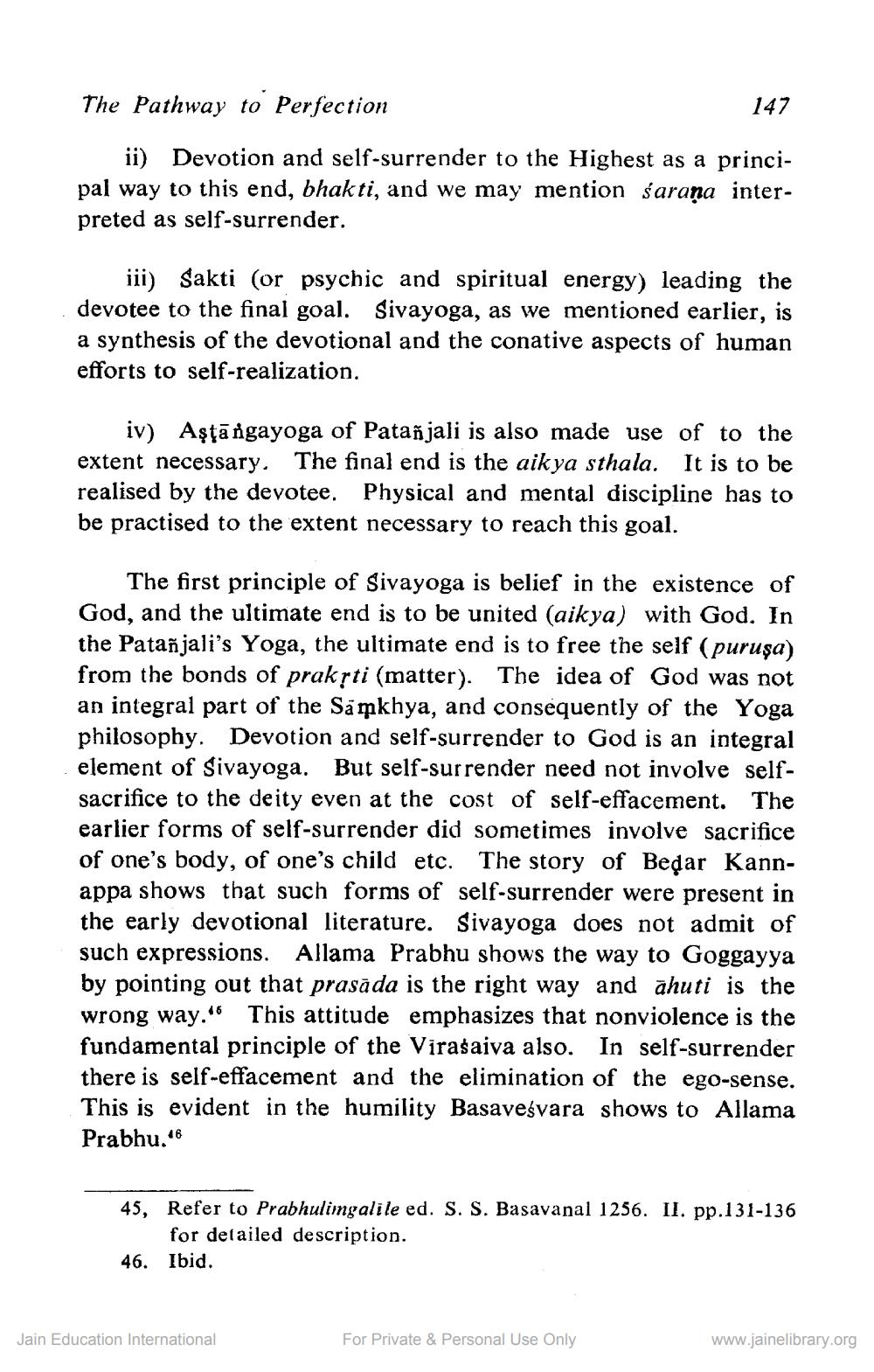________________
The Pathway to Perfection
ii) Devotion and self-surrender to the Highest as a principal way to this end, bhakti, and we may mention sarana interpreted as self-surrender.
iii) Sakti (or psychic and spiritual energy) leading the devotee to the final goal. Sivayoga, as we mentioned earlier, is a synthesis of the devotional and the conative aspects of human efforts to self-realization.
147
iv) Aşta ngayoga of Patañjali is also made use of to the extent necessary. The final end is the aikya sthala. It is to be realised by the devotee. Physical and mental discipline has to be practised to the extent necessary to reach this goal.
The first principle of Sivayoga is belief in the existence of God, and the ultimate end is to be united (aikya) with God. In the Patanjali's Yoga, the ultimate end is to free the self (puruşa) from the bonds of prakṛti (matter). The idea of God was not an integral part of the Samkhya, and consequently of the Yoga philosophy. Devotion and self-surrender to God is an integral element of Sivayoga. But self-surrender need not involve selfsacrifice to the deity even at the cost of self-effacement. The earlier forms of self-surrender did sometimes involve sacrifice of one's body, of one's child etc. The story of Beḍar Kannappa shows that such forms of self-surrender were present in the early devotional literature. Sivayoga does not admit of such expressions. Allama Prabhu shows the way to Goggayya by pointing out that prasāda is the right way and ahuti is the wrong way." This attitude emphasizes that nonviolence is the fundamental principle of the Virasaiva also. In self-surrender there is self-effacement and the elimination of the ego-sense. This is evident in the humility Basavesvara shows to Allama Prabhu.46
45, Refer to Prabhulimgalile ed. S. S. Basavanal 1256. II. pp.131-136 for detailed description.
46. Ibid.
Jain Education International
For Private & Personal Use Only
www.jainelibrary.org




